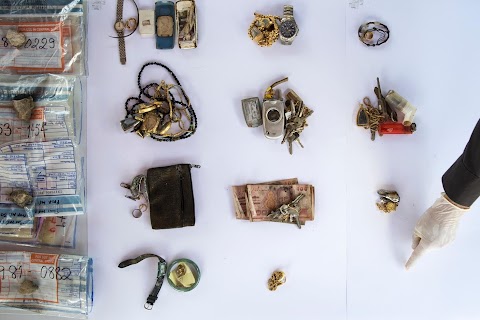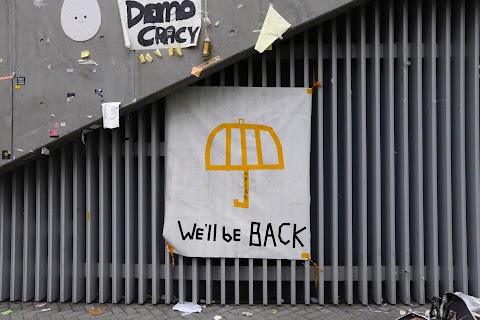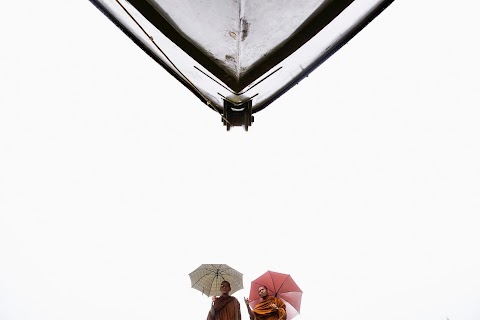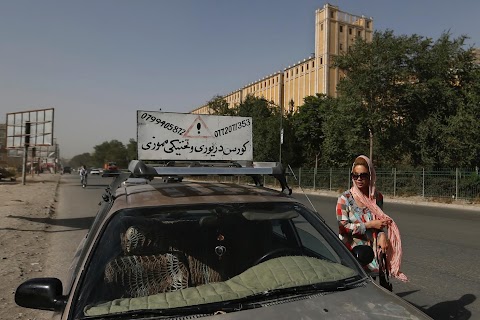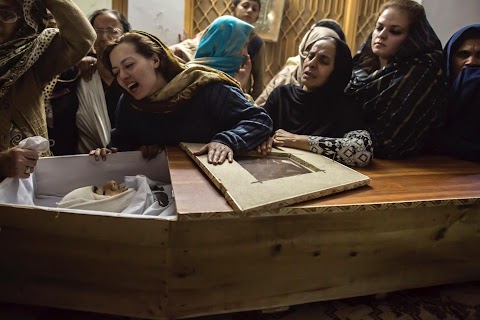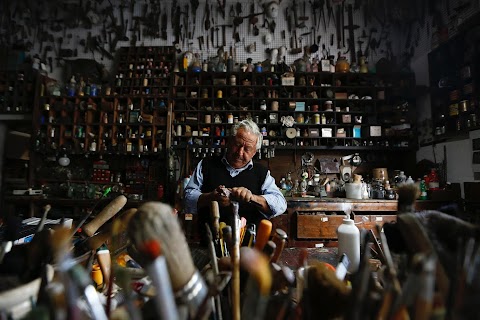
A guardian of time
 Tony Gentile
Tony Gentile
Everyone knows Domenico Agostinelli in Dragona, a low-income suburb west of Rome.
Many call him the rag collector, and you can find him in what looks at first like a junk shop. But what the 74-year-old collector has put together is, in fact, a museum of sorts.

Agostinelli has visited 60 countries and collected items of all kinds: a 65-million-year-old dinosaur egg, meteor fragments, a car that once belonged to American mob boss Al Capone, a lock of hair of Italian national hero Giuseppe Garibaldi, toys, weapons, musical instruments of all kinds and other things.
Panorama:
Clocks, toys, lamps and other objects are displayed in Agostinelli’s museum.

Panorama:
Statues, footballs, bottles and other objects are displayed in the museum.

"With tears welling up in his eyes, he admits to me that he is a misunderstood man. "
"I'm a guardian of time," says 74-year-old Domenico Agostinelli when I ask about his great passion, a passion that has led him over the past 60 years to pick up and collect things of all types, from antique art to everyday objects of the past and present.
"I feel like a Noah who wants to save objects from oblivion."
After watching a documentary on Domenico and the passion he has for his incredible collection, I decided I must go see this place and meet this man. Everyone knows Domenico in Dragona, so it is not hard to find him.
I ended up going there three times to shoot the pictures because it's impossible to stay there too long. There's so many things, so much confusion, that you get tired after a couple of hours and your eyes can no longer see anything. There are 3,200 umbrellas, more than 3 million stamps, four tonnes of nails, more than 1,000 irons and 1.5 million buttons.
Buttons have always been his great passion. "Every evening before I close the museum I put my hands in a barrel of buttons and I release all the negative tension of the day," Domenico says.
"Because buttons hold onto the positive energy of the people who possessed them, and anything that once belonged to the deceased has positive energy."
Domenico is not afraid to die. He has even, as was done in the past, prepared his own coffin, decorated with his buttons and other items that remind him of his life.
Now the museum has become the centre of his life, and you can hear it in the words he uses to describe every piece, from those displayed in the windows and cases, to those sitting in piles, waiting to possibly be restored one day.
Domenico says that most museums and collections of antiques were created by the nobility and the clergy as testimony to their own wealth; he instead has created his museum as testimony to humble, simple hardworking people, rich only with peasant wisdom.
To show how he views these objects, I thought some of them should be photographed as if they were valuable paintings that should be displayed inside a splendid frame like those in conventional museums.
He needs help to catalogue all the material he knows by heart, but the state is not helping and he fears that all will be lost when he dies.
With a crackle of emotion in his voice and tears welling up in his eyes, he admits to me that he is a misunderstood man.
But he has never let himself be discouraged and has continued to collect and put aside, object after object, to fill even further his extraordinary museum where Italy's greatest film directors come to select items and furniture for the scenes in their films.
